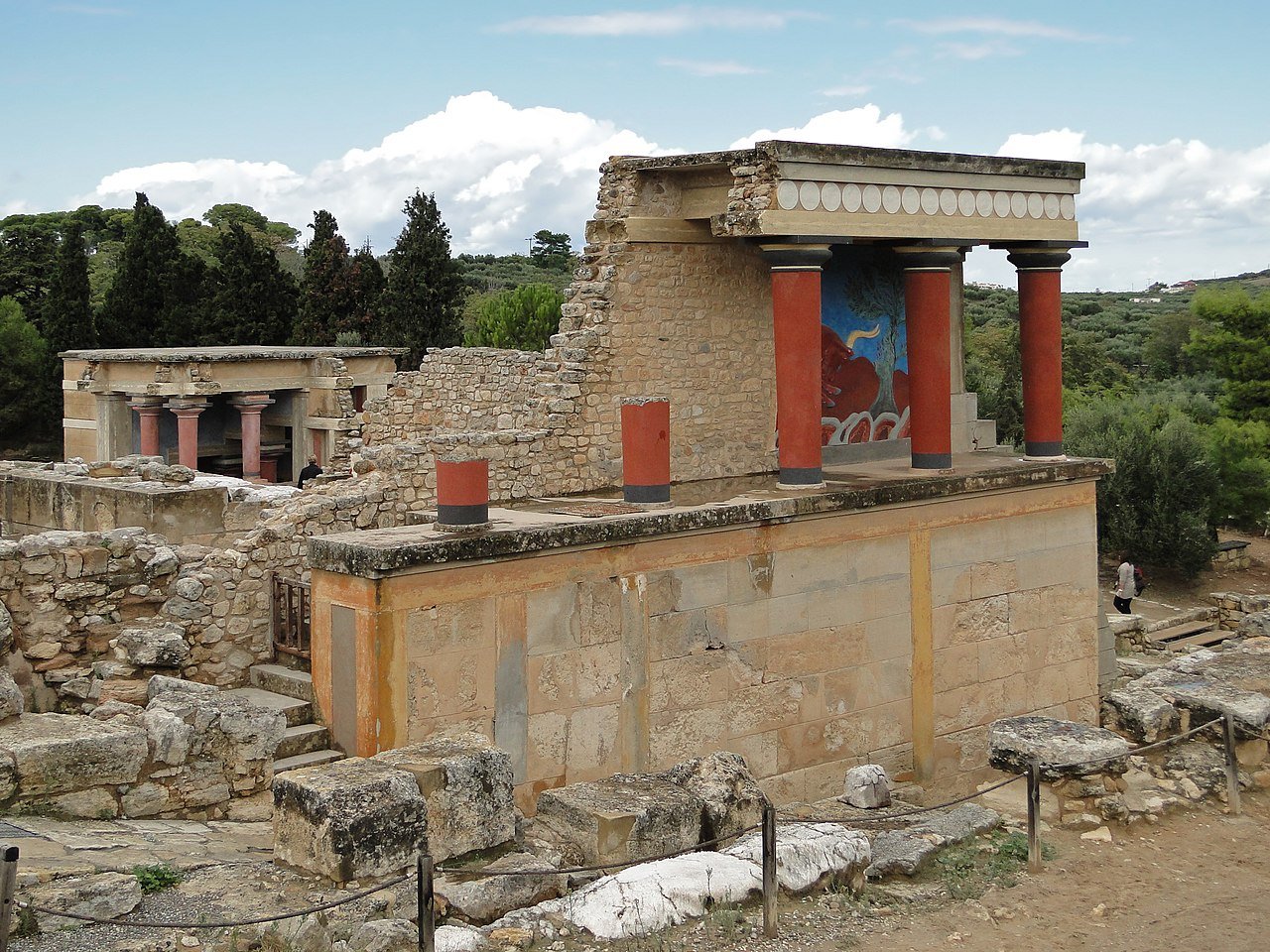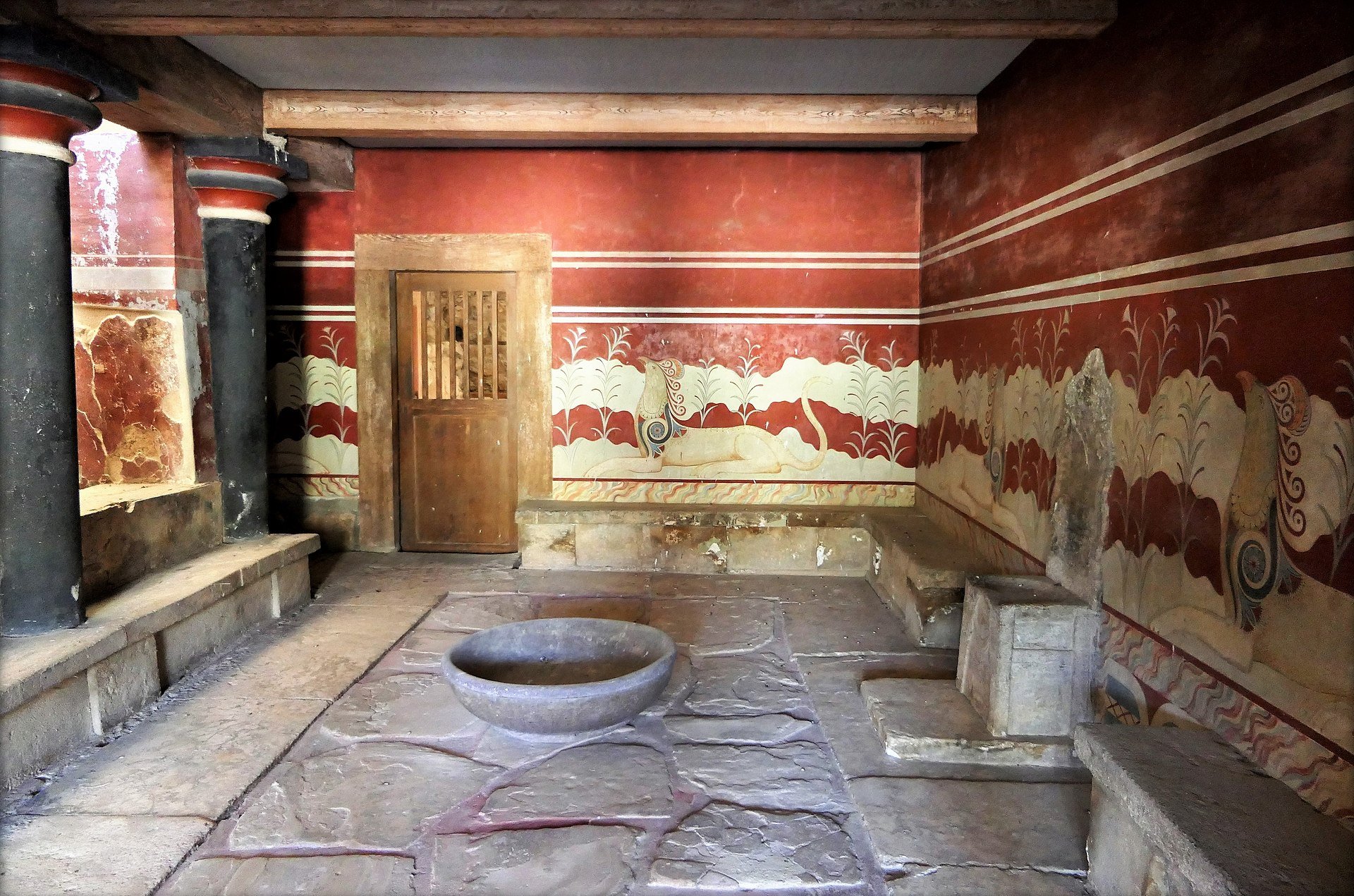
The glorious Palace of Knossos, the largest of all Minoan palaces on the island of Crete and one of Greece’s most popular archaeological sites, saw a record number of visitors in 2024, according to the Ephorate of Antiquities of Heraklion in Crete.
Over one million visited the famous site last year, surpassing those of 2019 -which, until now, had been the year with the most visitors ever recorded. During the summer months, over 5,000 people were visiting Knossos every day.
“I think Knossos is attractive [to visitors] because it is Knossos!” Vasiliki Sithianaki, director of the ephorate, tells Athens-Macedonia News Agency. “It is obvious, if someone is on the island and chooses to see one thing, that is the Knossos Palace,” she says, adding that the myth surrounding the palace and the way it was found and excavated continue to be of particular interest to the visitors.
Sithianaki notes that Knossos appeals to a large number of visitors, from those visiting the island for a few hours on a cruise, to scientists, archaeologists and student groups from both Greek and foreign schools.
The ephorate director also highlighted the upcoming works at the site, aiming to make it more visitor-friendly. The Ministry of Culture is conducting restoration work on important monuments at the Palace of Knossos. They are also improving visitor tours and accessibility. New and modern buildings will be constructed, including a ticket office, a storage area, a small medical office and sanitation facilities. At a later stage, the shop and the cafeteria will be moved to the western outdoor area of the site while a new area with multimedia applications will allow visitors to get information on the archaeological site before they enter.
“It’s a holistic upgrade, which will make the site more visitor-friendly and more modern when it comes to the infrastructure,” Sithianaki says, while highlighting that there will be further improvements within the archaeological site, including a path for disabled visitors in the main courtyard and improved pathways for all. “[It is] a new era for the Knossos Palace,” she adds.

The discovery and restoration of the glorious Palace of Knossos
The Palace of Knossos, located about three miles (five kilometers) south of Heraklion on Kephala hill, was the largest of all Minoan palaces on Crete in Greece.
It was also at the core of the highly sophisticated civilization that flourished on the island over 3,500 years ago.
The discovery and subsequent excavation of the palace dates back to the beginning of the twentieth century. Before that time, Knossos had only served as a place mentioned in Greek mythology.
The first modern scholar to take a serious interest in the area was the German Heinrich Schliemann, who, in 1870, had excavated the site believed to be Troy.
Schliemann was certain a major Minoan palace lay hidden near Heraklion, but Ottoman authorities who still ruled the island at the time would not permit him to dig there.
Years afterward, the British archaeologist Arthur Evans, inspired by Schliemann’s ideas, reached Crete to negotiate the purchase of a portion of land in Knossos.
He began excavations in 1900, and in a matter of days, he found enough evidence to indicate the presence of a huge palatial complex.
Controversial restoration efforts took place thanks to Evans’ personal ownership of the site and its wealth.
He referred to the civilization as the “Minoans” after legendary King Minos, and he also took liberties—which have been debated by numerous archaeologists since—rebuilding the site.
He roofed the Throne Room, reconstructed the Grand Staircase, and replaced columns. Evans also ordered the reconstruction of walls with frescoes and even added a conjectural Piano Nobile (upper story) using concrete.
Although his works are largely based on personal ideas, it is also true that without his restoration, it would have been impossible to deduce what the massive complex could have looked like in the past.